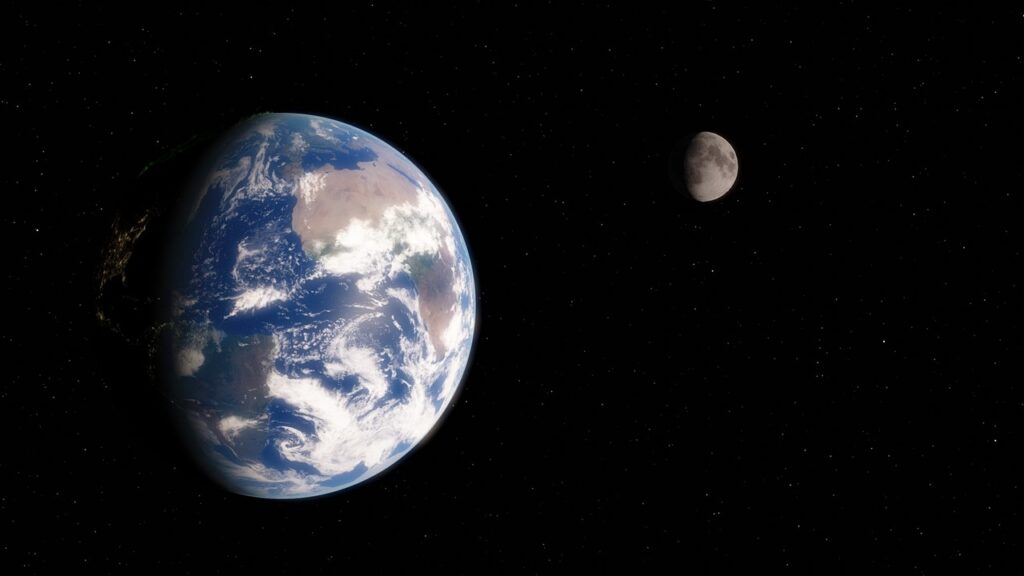
Introduction
With the discovery of thousands of exoplanets around other stars, scientists have begun to wonder about the moons which orbit them. In particular how these so called exomoons affect the habitability of the planets they orbit.
It turns out that having a massive moon was important for the existence and evolution of complex life on earth. Other then producing tides that helped life move on to land, a massive moon prevents Earth’s axial tilt from changing drastically.
By contrast, Mars has no massive moon. As a result, Mars’ polar axial tilt has drastically changed between 13 to 40 degrees in the past 10 million years. This causes extreme temperature changes which may stop complex life from evolving if life where to exist. By comparison, Earth’s axial tilt only changed between 22 to 24.5 degrees during that same time period.
Recently, astrophysicists Armen Tokadjian and Anthony L. Piro found that massive exomoons could have interesting effects on the spin of the exoplanets they orbit. They also find out how long such exomoons can exist around them.
Why is our Moon special?
To say that Earth’s moon is special because it is massive does not tell the whole story. Earth’s moon is not the most massive in the solar system. Both Jupiter’s moon, Ganymede, and Saturn’s moon, Titan, are heavier. However compared to their planets, both are incredibly tiny. This isn’t the case for Earth’s moon.
Let’s illustrate this, Ganymede is only 0.00787% the mass of Jupiter while Titan is only 0.0264% of Saturn. By comparison, the Moon is 1.23% the mass of Earth. This causes the moon’s gravity to have profound effects on Earth. One of these effects is that the Moon’s gravity is strong enough to stop Earth’s axial tilt from changing drastically like Mars.
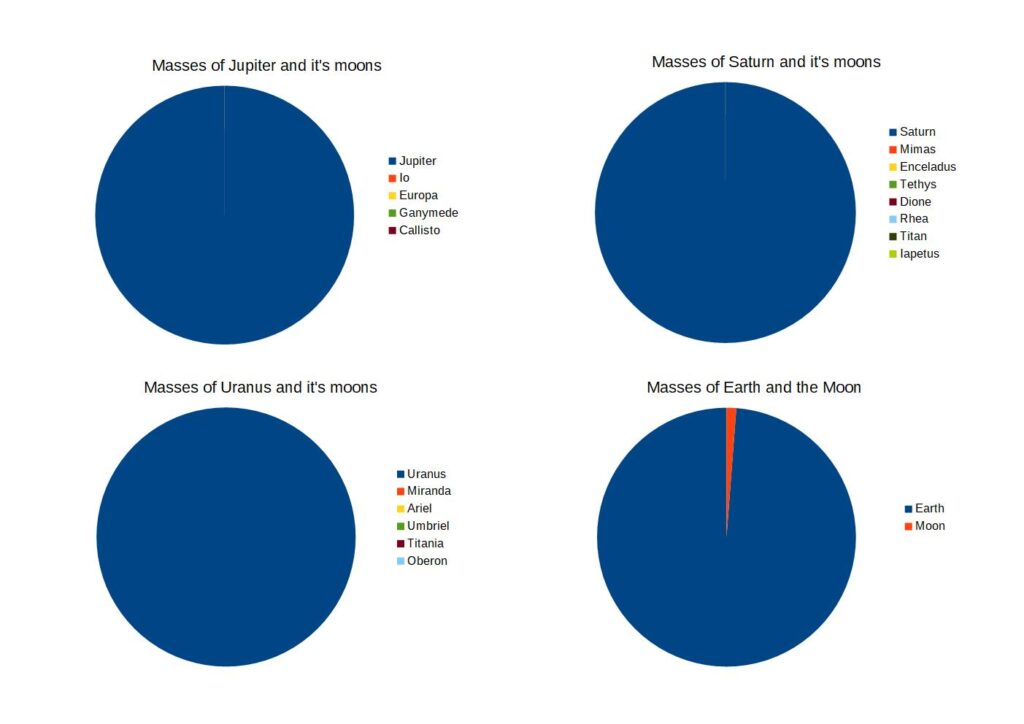
Why are massive exomoons important?
With exoplanets, scientists predict that tidal effects caused by massive exomoons could heat their interiors. This keeps the planet’s interiors molten and allow them to sustain plate tectonics. Plate tectonics could prevent runaway greenhouse effects by transporting carbon absorbed by the crust into the mantle of the planet.
Molten interiors also generate magnetic fields which prevents exoplanets from losing their atmosphere to their star’s stellar winds and protect their surfaces from deadly radiation from space.
Large gas giant planets bigger than Jupiter could have exomoons nearly as massive as earth which improves their habitability. This could be the case for giant exoplanets such as HD 28185 b which orbit within the habitable zone of it’s host star.
Tidal locking
Tokadjian’s paper looks at the tidal effects of a massive moon on exoplanets.
In addition to the advantages listed previously, massive exomoons will prevent tidal locking of the planet with it’s star. For those not familiar, tidal locking with the star means the planet has the same side facing the star. As one would expect, this causes big problems for any life that develops on the planet.
The star facing side of the tidally lock planet becomes so hot that water on that side evaporates. At the same time, the other side becomes so cold that water and possibly some of the atmosphere freezes solid.
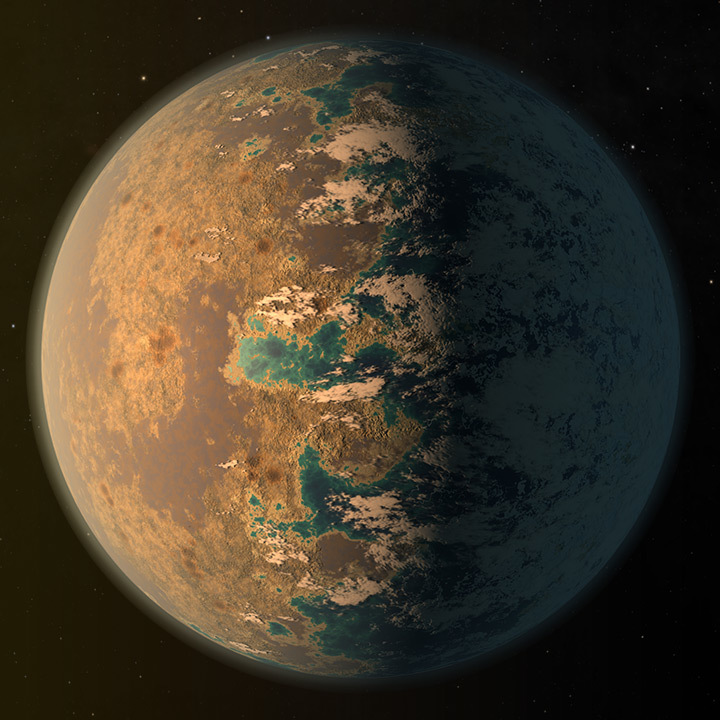
Tidal locking and (un)inhabitability
Previous research has shown that tidally locked planets are more likely to become inhospitable. This can even happen when they are in the habitable zones of their stars. In some cases, volatile materials on the day side of the planet keep evaporating until they cause a runaway greenhouse effect. In other cases, the planet’s atmosphere gradually freezes out on the night side until the planet has no atmosphere.
Worst still, slowing of the planet’s spin would stop it’s core from generating a magnetic field. This leads to the loss of the planet’s atmosphere by it’s star’s stellar wind. We see a similar thing happening to the planet Mars. Mars is too small to sustain it’s internal heat. Thus, it’s interior is no longer molten and generating any magnetic field. As a result, Mars has lost much of it’s atmosphere.
According to Tokadjian and Piro, tidally locked planets are less likely to have snowball events. A snowball event is when a planet becomes completely covered in ice. This happened to earth a number of times in the past and may be responsible for the emergence of complex life.
Exomoons and tidal locking
The gravitational pull of a moon causes the side of the planet facing the moon to bulge outward.
If the planet’s spin rate is faster than the moon’s orbital rate, the planet’s spin drags the bulge ahead of the moon. This causes the bulge to pull the moon forward causing it to move further away from the planet. At the same time, this also causes the planet’s spin to slow down.
If the planet spin rate is slower than the moon’s orbital rate, the planet’s spin drags the bulge behind the moon. This causes the bulge to pull back on the moon causing it to move closer to the planet. At the same time, this causes the planet’s spin to speed up.
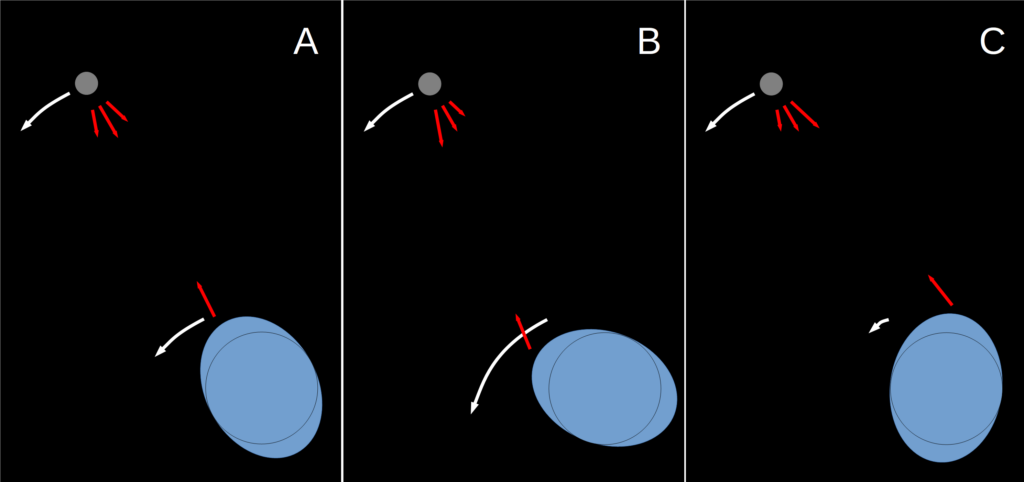
Simulations with no exomoon
To investigate the tidal effects of massive moons on planets, Tokadjian and Piro created simulations of systems involving sun-like stars and an orbiting earth-like planet with a moon around it.
Tokadjian and Piro also created simulations where the planet does not have a moon. In such simulations, tidal effects caused by the star on the planet causes it’s spin to slow down. Within 1 to 5 billion years, the planet becomes tidally locked to the star.
Simulations with an exomoon
For simulations where there is a moon orbiting the planet, something interesting happens. In this simulation, the planet starts off with a spin rate faster than the Moon’s orbital rate.
At first, the planet’s spin slows down due to both the star’s and moon’s gravity. At the same time, the distance between the moon and the planet increases as the planet’s bulge pull the moon forward in it’s orbit. When the planet’s spin rate becomes slightly slower than the moon’s orbital rate, the moon’s gravity stops the planet’s spin from slowing any further.
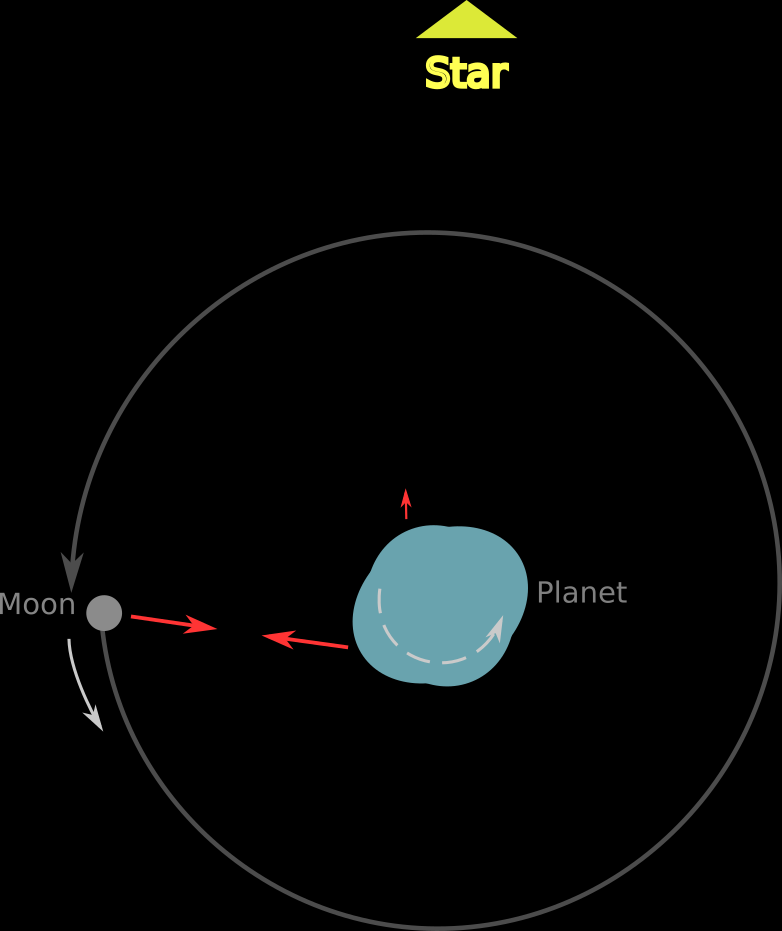
At this point the planet’s spin becomes almost tidally locked to the moon. Tidal effects from the star cause the planet’s spin rate to be slightly slower than the orbital rate of the moon. This pulls the moon back in it’s orbit causing it to move closer to the planet making it orbit faster. This in turn drags the planet’s tidal bulge forward increasing it’s spin rate.
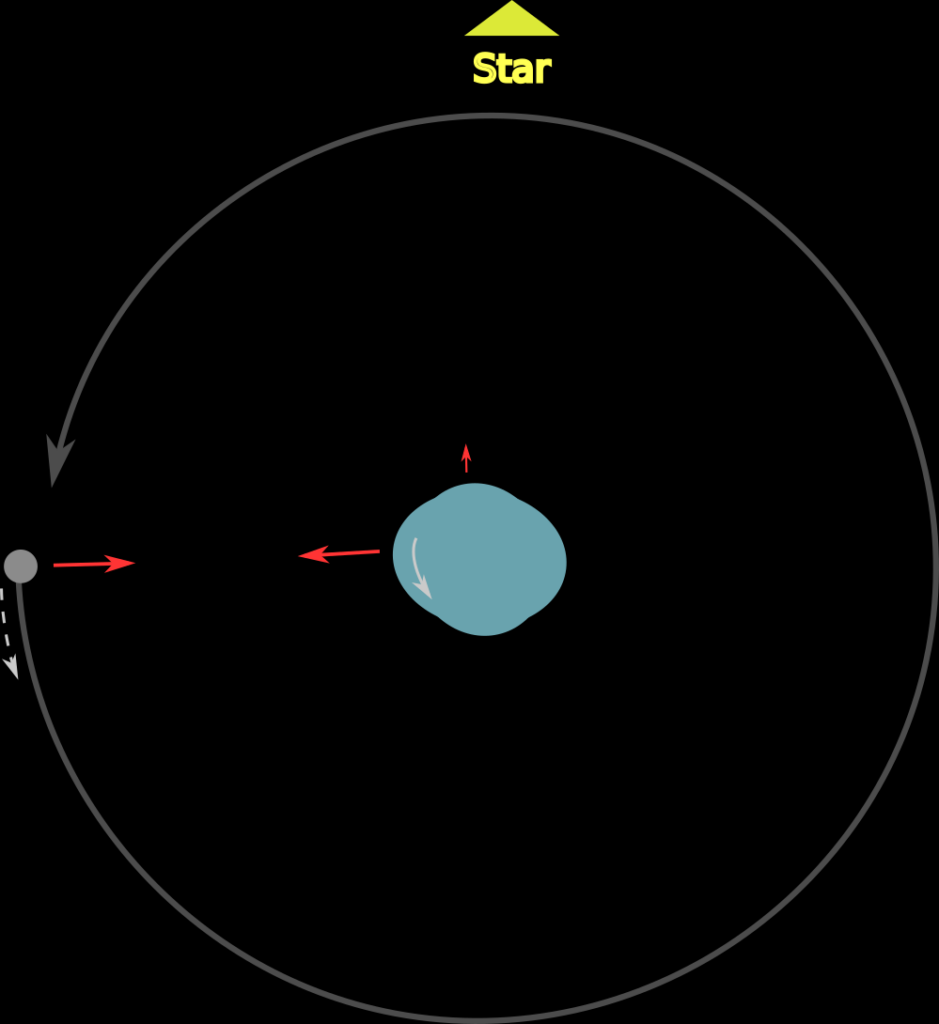
This occurs over billions of years and serves to delay tidal locking of the planet to the star. Eventually, the moon crosses the Roche radius where tidal forces from the planet’s gravity tears it apart thus putting a limited survival time for the moon.
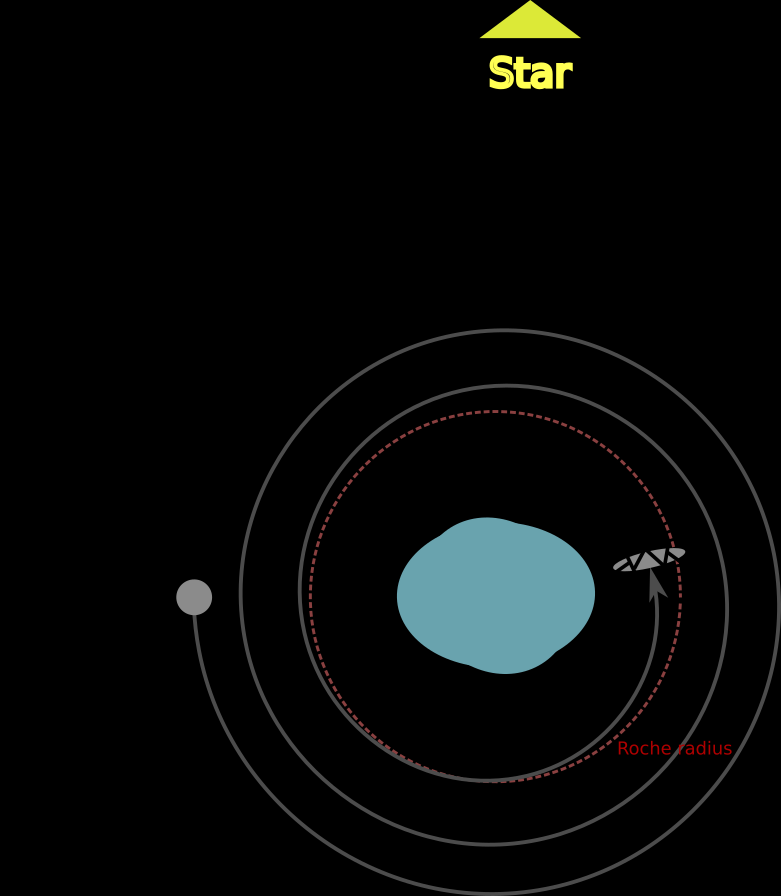
Exomoons and exoplanet properties
Tokadjian and Piro then applied their models to more than 2000 exoplanets discovered by the Kepler space telescope. Many of these have their size known but not their mass. None the less this still allowed Tokadjian and Piro to slit these exoplanets into 3 groups.
The first group consists of rocky planets, the next consists of Neptune-like planets and the last group has Jupiter-like planets. Tokadjian and Piro design their tests to reveal any patterns related to the moon’s tidal interaction with the planet and the type of planet it is.
The results show that rocky planets often do not keep their moons for long. In many cases, the moon gets torn apart after 1 to 2 billion years. However, this was not the case for a handful of rocky planets in the habitable zones of their stars. These rocky planets kept their moons for more than 10 billion years.
Moons around Neptune-like and Jupiter-like planets survived longer. According to Tokadjian and Piro, this is due to such planets not being as affected by tidal forces as smaller planets. Some of these planets within the habitable zone of their star were able to hold a moon for more than 15 billion years.
These results are very important for other astronomers studying exoplanets according to Tokadjian and Piro. The presence of a moon will allow astronomers to guess what the exoplanet is made of. This is assuming they know the age of the planetary system.
Future research
As of now, there are a couple of exomoon candidates around some exoplanets. A confirmed discovery of one will be very exciting and will allow astronomers to learn more about exoplanets and possibly our earth moon system. Advances in techniques used for finding exoplanets and more powerful telescopes coming online will ensure this would happen.
The discovery of exomoons may reveal new insides into how planetary systems form. It will certainly influence the way scientists look for life outside the solar system.
Conclusion
Massive moons appear to be important for the habitability of a planet. As shown by Tokadjian’s and Piro’s research, a massive exomoon’s gravity will delay the slowing of it’s planet spin due to it’s star. This in turn delays the effects of tidal locking that could make the planet unfit for life.